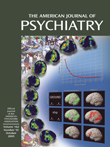Adverse Outcomes Associated With Personality Disorder Not Otherwise Specified in a Community Sample
Abstract
OBJECTIVE: The authors investigated 1) whether adolescents and adults in the community diagnosed with personality disorder not otherwise specified are at elevated risk for adverse outcomes, and 2) whether this elevation in risk is comparable with that associated with the DSM-IV cluster A, B, and C personality disorders. METHOD: A community-based sample of 693 mothers and their offspring were interviewed during the offspring’s childhood, adolescence, and early adulthood. Offspring psychopathology, aggressive behavior, educational and interpersonal difficulties, and suicidal behavior were assessed. RESULTS: Individuals who met DSM-IV criteria for personality disorder not otherwise specified were significantly more likely than those without personality disorders to have concurrent axis I disorders and behavioral, educational, or interpersonal problems during adolescence and early adulthood. In addition, adolescents with personality disorder not otherwise specified were at significantly elevated risk for subsequent educational failure, numerous interpersonal difficulties, psychiatric disorders, and serious acts of physical aggression by early adulthood. Adolescents with personality disorder not otherwise specified were as likely to have these adverse outcomes as those with cluster A, B, or C personality disorders or those with axis I disorders. CONCLUSIONS: Adolescents and young adults in the general population diagnosed with personality disorder not otherwise specified may be as likely as those with DSM-IV cluster A, B, or C personality disorders to have axis I psychopathology and to have behavioral, educational, or interpersonal problems that are not attributable to co-occurring psychiatric disorders. Individuals with personality disorder not otherwise specified and individuals with DSM-IV cluster A, B, or C personality disorders are likely to be at substantially elevated risk for a wide range of adverse outcomes.



